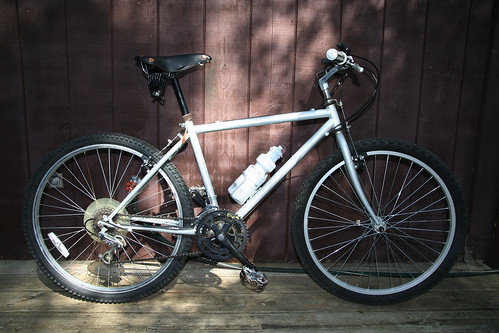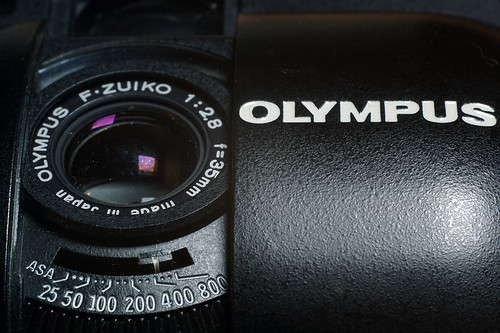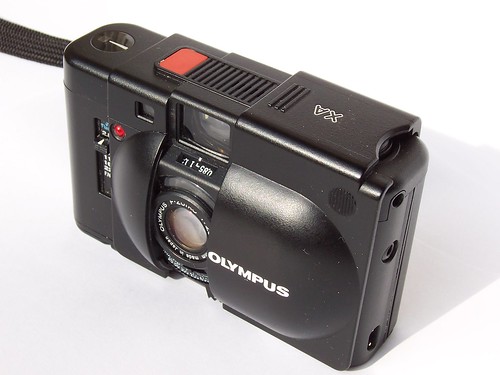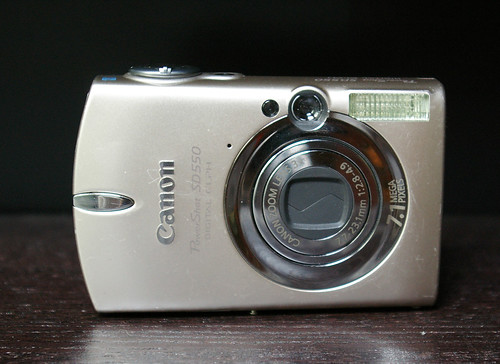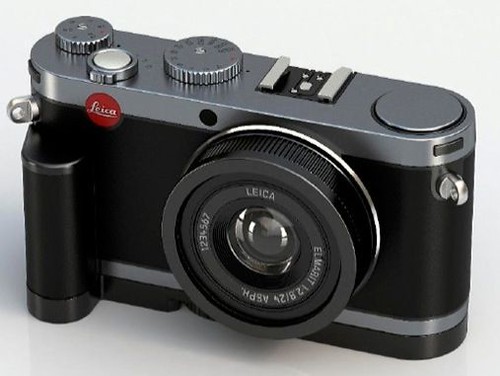As I mentioned in a previous post, high-quality compact cameras are hard to come by in today's digital camera market. In the SLR arena, the trend has been bigger sensors, bigger (and more!) grips, and bigger bodies. There is no doubt in my mind that at the top of the SLR market, and even the bottom, in quality and versatility today's cameras are superior to those made 20 years ago. A more recent trend, unsurprisingly began by Olympus, is the creating of a new market of compact SLRs. I am anxious to purchase a compact SLR to replace my digital Rebel, and the market is finally near the point where I feel comfortable jumping to a new system.
![]() The modern SLR takes great photos, takes up lotsa space. by fotographix.ca.
The modern SLR takes great photos, takes up lotsa space. by fotographix.ca.This all began when Olympus released their
E-410 compact SLR. They began by designing a small, lightweight body around their proprietary smaller sensor, and eliminating the body grip. The image quality and handling was the same as their larger cameras. A good starting point, but the unveiling of a new system, micro-4/3, soon took these innovations to a new level.
The new µ4/3 system is designed around a non-SLR base, with electronic viewfinder instead of a mirror box, interchangable lenses, and near-compact size. The
Panasonic G1 was the first camera for this system, and it boasted a small body, albeit styled in the conventional SLR manner. This didn't make a whole lot of sense to me, with all the extra space the viewfinder and grip took up. The
Olympus EP-1 was next, launching with the new tiny 17mm lens available, a small external flash, and no viewfinder, a much smaller footprint. Panasonic added HD video with its
GH-1, and recently announced its own
compact GF-1, which has a tiny integrated flash, an optional electronic viewfinder, and a 20mm pancake lens. The current lens offerings cover 35mm equivalents of 14 to 400 mm in this format, and there are official adapters for 4/3 lenses, Olympus OM system lenses, and the classic Leica lenses.
![]() Panasonic GF-1, image by micamica
Panasonic GF-1, image by micamicaPerhaps the most exciting development around the new µ4/3 system is the availability of a myriad of lens adapters to allow the use of old manual-focus lenses with the camera. Because of the camera's mount design, many systems of lenses, including old cinematic lenses, can be used with the new µ4/3 in manual focus mode. It appears that manual focusing by the camera's rear screen is quite possible, and the camera can meter the old lenses in stop-down mode as well. This gives a useful depth of field preview, and because of the way these cameras work the viewfinder does not dim while the lens stops down. That in and of itself is incredible and could make shooting in such a way much simpler than in the past.
![]() Olympus E-P1, with Voigtlander 12mm lens. Photo by euyoung
Olympus E-P1, with Voigtlander 12mm lens. Photo by euyoungI'm currently torn between the Panasonic GF-1 and Olympus E-P1. The Panasonic has an optional electronic viewfinder, on-body flash, better screen resolution, and doubly fast autofocus. The olympus is cheaper, sleeker, and has Image stabilization for reducing camera shake. If I had to choose now, I'd probably go with the Panasonic because its autofocus speed is so much faster, and the flash. But something tells me that Olympus will up the game before the Panasonic hits the streets.




